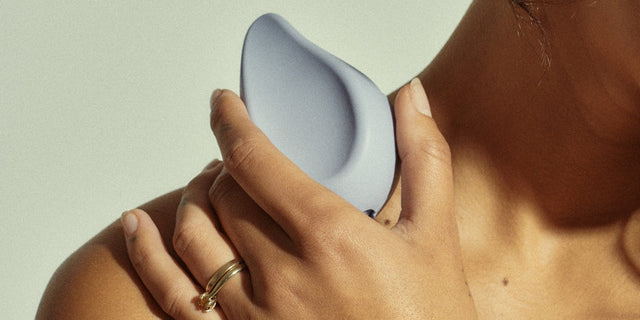Mirena® is a hormone-releasing intrauterine device (IUD) that safeguards against pregnancy. It’s over 99% effective at preventing pregnancy for up to 5 years and can also help with heavy periods for up to 5 years (making it a popular endometriosis management tool).
If your Mirena® is due for replacement soon or you’re thinking about getting it out for a different reason, you’re probably wondering what the removal process involves.
Read on as Dr Kavipriya Soma from Athena Women’s Clinic explains what to expect during and after the procedure. We’ll also shed some light on the infamous ‘Mirena® crash’.
When should I get my Mirena® taken out?
If you’re using a Mirena®, you’ll need to get it replaced before it expires. Alternatively, you might decide to part ways with the device for good.
“In my clinical experience, the main reasons for Mirena® removal – aside from replacement – is ongoing heavy or erratic bleeding and skin and mood symptoms due to hormone sensitivity.”
It’s important to note that bleeding after Mirena® insertion is normal in the first 6 months. If the bleeding persists after 6 months, the Mirena® might not be for you.
“There are ways to mitigate the side effects of heavy bleeding,” says Dr Soma. “So I recommend speaking to your health professional before you decide to take it out.”
Other reasons for calling it quits may include:
- Migraines
- Severe bleeding and anemia
- Uterine perforation (a hole or tear in your uterus)
- Pain or discomfort during sex
- IUD expulsion (when the device moves out of place)
- Pregnancy (super low risk but can happen), or wanting to get pregnant
Vaginal infections
Vaginal infections are another complication that can happen with a Mirena®. “Your IUD is a foreign body, meaning it’ll act as a good medium for bacteria,” Dr Soma explains.
However, infection isn’t always a deal breaker. “If your vaginal infections are ongoing, sometimes cutting the thread of the Mirena® short will also reduce the recurrent infections and you can still benefit from having the device in there.”
What does the removal process involve?
Mirena® removal is usually simple and straightforward and should only be conducted by a qualified healthcare professional.
“You will be put in the same position as when you get a pap smear done,” says Dr Soma. “A speculum – known as the duck’s bill – will be introduced, and the health professional should be able to view the strings. The Mirena® is then held with a clamp and pulled out.
“It’s a quick tug that lasts less than one second.”
Potential hiccups
While Mirena® extraction is usually very simple, it can become complicated if your doctor can’t find the thread.
“If the thread can’t be seen, the Mirena® might have fallen out without you knowing,” says Dr Soma. “Or it might have moved into the tummy. In this situation, you might have pain and discomfort or no symptoms at all.”
“Sometimes the thread is just curled inside the cervix. In this case, your doctor will use a special instrument to bring the thread down and pull the device out.”
What happens after Mirena® removal?
Be prepared for a few minutes of pain, cramping and a small amount of bloody discharge following Mirena® IUD removal. This is totally normal.
With Mirena®, bleeding after removal may continue for a few hours or days. If this happens, a pair of Modibodi period underwear will keep you dry and comfy until the bleeding stops.
If the bleeding has you worried, make a follow-up appointment with your doc.
Additional post-removal symptoms are uncommon, but if you do get any, they may include:
- Acne
- Tender breasts
- Fatigue
- Mood changes
- Nausea
- Weight gain
In rare cases, Mirena® extraction can cause serious symptoms that require prompt medical attention. These include:
- Anxiety, depression and major mood swings
- Excessive bleeding
- Fever
- Severe or persistent pain in the lower belly or uterus
What is a Mirena® crash?
Although a severe reaction to Mirena removal is rare, some people report a set of clingy symptoms that can last for days, weeks or even months. This phenomenon has been dubbed ‘the Mirena® crash’.
It is important to note that the concept of a Mirena® crash lacks scientific backing, and most of the info on it is purely anecdotal.
Symptoms are thought to include:
- Acne
- Anxiety and depression
- Delayed fertility
- Hair loss
- Headaches (sometimes severe, with neck and shoulder pain)
- Lowered sex drive
- Malaise (feeling out of sorts) and fatigue
- Mood swings (sometimes severe)
- Nausea
- Tender or swollen breasts
- Weight gain
When will I get my first period post-removal?
Everyone’s body is different, so everyone’s period can take different amounts of time to return after the Mirena®’s exit. It can show up immediately or take a few months. On average, it takes about 4 weeks.
Most people find that their periods are lighter in the first few months after removal; the Mirena® contains a hormone that thins the lining of your uterus, so there’s usually less blood to shed.
If you fall into this category, Modibodi’s Super Light and Light-Moderate absorbency underwear offer convenient, discreet leak protection while your uterine lining builds itself back up again.
According to Dr Soma, some people find that their flow goes right back to what it used to be.
“You may even consider it heavy, especially if you haven’t had a period for 4 or 5 years,” she says. “But it could be normal.”
If you’re worried about heavy bleeding, it’s a good idea to consult your doctor.
Period underwear can help see you through
Getting your IUD out may not be the most comfortable experience, but it’s typically a speedy and straightforward process with minimal after-effects.
If you’re worried about post-exit bleeding, why not wear a pair of Modibodi period underwear to your procedure? Our absorbent briefs will absorb blood, providing you with comfort and peace of mind in the hours, days and weeks after your appointment.
Keen to know more about menstruation-related topics? Head to our blog for more enlightening reads.









